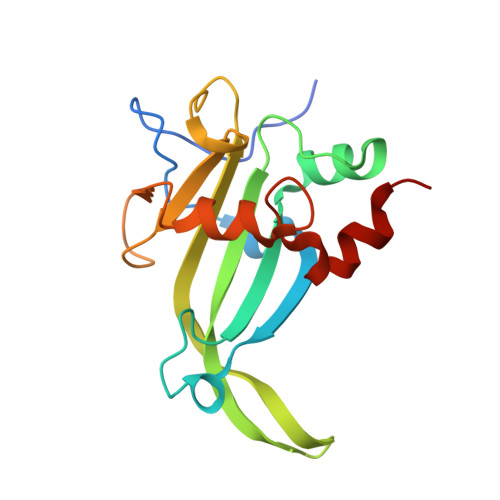Controlling a burn: outer-sphere gating of hydroxylamine oxidation by a distal base in cytochrome P460.
Smith, M.A., Majer, S.H., Vilbert, A.C., Lancaster, K.M.(2019) Chem Sci 10: 3756-3764
- PubMed: 31015919
- DOI: https://doi.org/10.1039/c9sc00195f
- Primary Citation of Related Structures:
6E0X, 6E0Y, 6E0Z, 6E17 - PubMed Abstract:
Ammonia oxidizing bacteria (AOB) use the cytotoxic, energetic molecule hydroxylamine (NH 2 OH) as a source of reducing equivalents for cellular respiration. Despite disproportionation or violent decomposition being typical outcomes of reactions of NH 2 OH with iron, AOB and anammox heme P460 proteins including cytochrome (cyt) P460 and hydroxylamine oxidoreductase (HAO) effect controlled, stepwise oxidation of NH 2 OH to nitric oxide (NO). Curiously, a recently characterized cyt P460 variant from the AOB Nitrosomonas sp. AL212 is able to form all intermediates of cyt P460 catalysis, but is nevertheless incompetent for NH 2 OH oxidation. We now show via site-directed mutagenesis, activity assays, spectroscopy, and structural biology that this lack of activity is attributable to the absence of a critical basic glutamate residue in the distal pocket above the heme P460 cofactor. This substitution is the only distinguishing characteristic of a protein that is otherwise effectively structurally and spectroscopically identical to an active variant. This highlights and reinforces a fundamental principal of metalloenzymology: metallocofactor inner-sphere geometric and electronic structures are in many cases insufficient for imbuing reactivity; a precisely defined outer coordination sphere contributed by the polypeptide matrix can be the key differentiator between a metalloenzyme and an unreactive metalloprotein.
- Department of Chemistry and Chemical Biology , Baker Laboratory , Cornell University , Ithaca , NY 14853 , USA . Email: kml236@cornell.edu.
Organizational Affiliation:


















